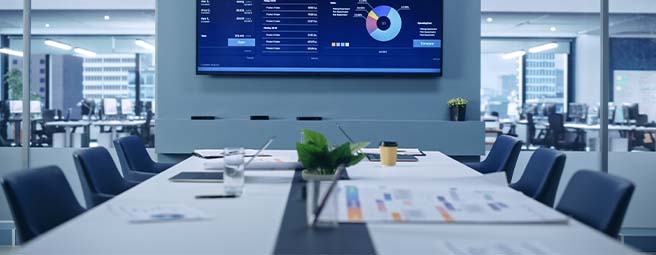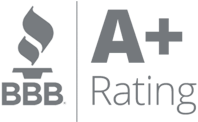
What is the difference between a board room and a conference room?
Board Room vs Conference Room: Understanding the Distinction for Your Business Needs
The strategic selection of meeting environments plays a pivotal role in organizational success and professional outcomes. When executives inadvertently reserve casual conference facilities for high-stakes investor presentations or board deliberations, the resulting atmospheric mismatch can significantly compromise corporate credibility and undermine critical business relationships.
The distinction between board rooms and conference rooms represents far more than mere nomenclature—these environments fundamentally influence meeting dynamics, stakeholder perceptions, and strategic business outcomes. Professional workers require flexible workspaces that provide the necessary resources and amenities to be productive, making the informed selection of appropriate meeting environments essential for achieving specific organizational objectives and maintaining competitive advantage.
This comprehensive analysis examines the strategic differences between these professional meeting environments, exploring their specialized functions in corporate governance versus collaborative operations, formality protocols, advanced technological capabilities, and capacity optimization strategies. Davinci Meeting Rooms' extensive portfolio of premium meeting facilities encompasses both executive boardrooms and versatile conference rooms across hundreds of strategically located venues worldwide, ensuring organizations maintain access to optimal professional environments that align with their specific business requirements and enhance their corporate reputation.
Board Room vs Conference Room: Defining the Executive Boardroom
1. Purpose and Governance Function
A boardroom represents the pinnacle of corporate meeting spaces, specifically designed for high-level executive decision-making and governance functions. A “board” refers to a group of C-suite senior executives such as the Chairman, Managing Director, Company Secretary and other Directors that a company has appointed to oversee the running and control of the organization or business.
All conversations that take place during a company's board meeting in the boardroom are discussed formally, entered in writing, and entered into the company records. This formal documentation requirement underscores the boardroom's role in maintaining corporate transparency and regulatory compliance.
2. Design and Atmosphere Characteristics
Boardrooms often feature an elegant and sophisticated ambiance, reflecting the seriousness and significance of the discussions that take place within them. The space typically revolves around a large, central table that promotes direct face-to-face interaction among participants.
Executive-grade furnishings distinguish boardrooms from standard meeting spaces, featuring premium materials and refined décor that projects authority and professionalism. Due to the sensitive nature of boardroom discussions, these spaces are often isolated from the main office area, ensuring confidentiality and minimizing external disturbances. Davinci's boardrooms feature sophisticated design elements that immediately convey executive authority.
3. Equipment Features
Boardrooms have microphones in front of every member. This is because boardrooms are often large, with huge tables. With the air conditioning running and chatter around the room, it pays to have a microphone in front of you. Advanced video conferencing capabilities enable seamless participation from remote board members and external stakeholders.
High-resolution digital displays, interactive whiteboards, and premium audio systems create an immersive environment for complex presentations. Here technology-equipped boardrooms provide advanced infrastructure with professional support staff available throughout your session.
Conference Room vs Board Room: Exploring Versatile Meeting Spaces
1. Multi-Purpose Functionality
Conference rooms serve as versatile workhorses, designed to accommodate diverse meeting types and organizational functions. Brainstorming sessions, team project discussions, client presentations, and departmental meetings are all commonly held in meeting rooms. These adaptable spaces excel at hosting everything from departmental brainstorming sessions to comprehensive training workshops.
Conference rooms seamlessly transition from morning team huddles to afternoon client pitches, accommodating various group dynamics throughout the day. Look for a provider like Davinci Meeting Rooms with a conference room network with essential flexibility, offering spaces that can be quickly reconfigured to match your specific meeting objectives.
2. Layout and Design Flexibility
Unlike boardrooms, conference rooms can accommodate different seating arrangements based on the purpose of the meeting. They can be rearranged into a U-shape, classroom-style, theater-style, or even an open discussion layout, depending on the requirements.
Conference rooms are typically larger than boardrooms and can comfortably accommodate a larger number of participants, often ranging from 20 to 100 people or more, depending on the organization's size. The less formal atmosphere encourages open participation and creative thinking. Look for a meeting provider that allows you to select conference rooms with exact capacity and layout configurations needed for optimal engagement.
3. Collaboration Tools
Conference rooms are equipped with audiovisual equipment, such as projectors, screens, and audio systems, to facilitate presentations and enhance collaboration. Additionally, they may feature whiteboards, flip charts, and video conferencing capabilities to encourage interactive discussions.
Standard presentation tools include high-definition displays, wireless presentation capabilities, and integrated sound systems supporting both in-person and hybrid meeting formats. Meeting rooms need to come with professional-grade technology and user-friendly interfaces, plus dedicated support staff.
Board Room vs Conference Room: Side-by-Side Comparison
1. Capacity and Size Considerations
Boardrooms are generally smaller than meeting rooms, comfortably accommodating 8–20 people around a large central table. This intimate setting ensures direct face-to-face dialogue essential for high-level strategic discussions.
Conference rooms operate on a different scale, designed for larger group accommodation. The impact of room size on meeting dynamics cannot be understated—smaller boardroom environments encourage intimate discussions, while larger conference rooms facilitate open dialogue and diverse perspective sharing. Here you require an intelligent booking system that allows you to filter spaces by exact capacity requirements across their global network.
2. Formality and Atmosphere Differences
The atmosphere in a boardroom is usually more formal, reflecting the high-stakes nature of the discussions. Boardrooms command executive presence, establishing a serious tone for strategic thinking among senior leadership.
Conference rooms embrace a more relaxed, collaborative atmosphere that promotes creativity and open communication. These atmospheric differences carry practical implications for dress codes and meeting etiquette. Seek out providers that provide you with space descriptions based on formality levels, helping you match the appropriate atmosphere to your meeting's importance.
3. Technology and Privacy Features
Given the high-stakes nature of board meetings, advanced technology is often integrated. Large screens, video conferencing capabilities, and high-quality sound systems facilitate presentations, remote participation, and clear communication. Boardrooms feature premium technology including individual microphone systems and sophisticated conferencing equipment.
Conference rooms employ standard audiovisual equipment focused on accessibility and ease of use. The level of technology varies depending on the company and the typical use of the meeting room. Basic meeting rooms might have a projector and screen, while others might have video conferencing or whiteboards. Davinci's detailed technology specifications ensure you can select venues with exactly the equipment your presentation requires.
|
Advantages |
Disadvantages |
|
|
Conference Rooms |
Flexible Layouts & Capacity: Adaptable seating arrangements accommodating 20-100+ participants Cost-Effective: Superior value for large teams Collaborative Atmosphere: Breaks down hierarchical barriers Easy Booking: Quick processes without complex approvals |
Less Prestigious: Insufficient for high-level client meetings Privacy Limitations: Open locations may compromise confidential discussions Standard Technology: May be insufficient for complex presentations Higher Noise Levels: Can create distractions |
|
Boardrooms |
Executive Presence: Projects authority and establishes credibility Enhanced Privacy: Secure environment with soundproofing Premium Technology: Individual microphones, executive displays Focused Environment: Encourages concentrated decision-making |
Higher Costs: Significant budget allocation required Limited Capacity: Restricted to small groups (8-20 participants) Intimidating Atmosphere: May stifle junior staff participation Advance Booking: Restricted availability limits flexibility |
Board Room vs. Conference Room: Weighting the Advantages and Disadvantages
Board Room vs Conference Room: Making the Strategic Choice
1. Decision Framework and Criteria
Selecting between a boardroom and conference room requires systematic evaluation of five critical factors. Meeting purpose assessment forms the foundation—governance-focused activities favor boardrooms, while collaborative functions benefit from conference room flexibility.
Participant analysis significantly influences space selection. Executive-level meetings require the formal atmosphere that boardrooms provide, while mixed teams perform better in conference rooms where collaborative atmosphere encourages open participation.
Confidentiality requirements determine privacy needs. Due to the sensitive nature of boardroom discussions, privacy and security are paramount. Technology and presentation needs vary significantly—complex executive presentations favor boardrooms, while routine presentations work effectively in conference rooms.
2. Industry-Specific Considerations
Legal and financial sectors prioritize boardrooms for client meetings and confidential negotiations where professional image and privacy are paramount. Creative industries often favor conference rooms that support collaborative brainstorming. Technology companies require adaptable spaces, often preferring conference rooms for agile workflows. Healthcare organizations need secure environments for compliance discussions. Identify a provider with a diverse portfolio that includes specialized meeting spaces tailored to each sector's unique requirements, from secure boardrooms with enhanced privacy features for legal and healthcare professionals to flexible, technology-enabled conference rooms designed for creative and tech industry collaboration.
Board Room vs Conference Room: Davinci's Comprehensive Solution
Hybrid Package Benefits
Providers with innovative hybrid packages eliminate the traditional choice dilemma by providing bundled access to both premium space types within a single membership solution. Coworking spaces are well-positioned to meet this demand, offering an alternative to traditional office spaces that may not be suitable for remote workers.
The bundled approach delivers substantial cost savings compared to individual space bookings, offering predictable monthly costs that accommodate varying space requirements. This flexibility proves invaluable for growing businesses needing professional meeting environments without expensive long-term office leases.
Network Coverage and Booking Process
An extensive global network provides unparalleled accessibility across hundreds of prime business locations worldwide. The user-friendly mobile app transforms space booking into a streamlined process supporting busy professional schedules.
Real-time availability checking eliminates booking uncertainty, while professional support services provide dedicated assistance for complex event planning and technical setup requirements.
Board Room vs Conference Room: Adapting to Future Workplace Trends
Emerging Trends in Meeting Spaces
Hybrid meeting technology integration represents the most significant transformation, seamlessly connecting in-person and remote participants. AI can recommend suitable meeting rooms based on occupancy and member preferences, optimize space utilization through predictive analytics.
Coworking spaces are increasingly incorporating wellness-focused amenities to promote physical and mental well-being. Yoga and meditation rooms, fitness centers, and healthy food options can help members stay energized and focused throughout the day. Flexible workspace evolution continues reshaping traditional meeting room concepts with adaptable furniture systems and multi-purpose environments.
Finding Your Ideal Board Room or Conference Room Solution
Understanding the distinction between boardrooms and conference rooms empowers businesses to make strategic space selections that align with specific meeting objectives, participant dynamics, and organizational requirements. Whether you need executive boardrooms for governance functions or flexible conference rooms for collaborative projects, the choice should reflect your unique business context.
Frequently Asked Questions
Q1: What is the main difference between a board room and a conference room?
A1: The primary distinction lies in their intended purpose and formality level. Board rooms are designed specifically for high-level executive decision-making, governance functions, and confidential strategic discussions, while conference rooms serve as versatile spaces for collaborative meetings, presentations, and team-based activities. Board rooms typically feature more sophisticated technology, enhanced privacy measures, and formal atmospheres that reflect their role in critical business decisions.
Q2: When should I choose a boardroom over a conference room for my meeting?
A2: Select a boardroom when hosting executive-level meetings, board of directors sessions, confidential negotiations, or high-stakes investor presentations where professional image and privacy are paramount. Conference rooms are ideal for team brainstorming sessions, training workshops, departmental meetings, or any collaborative activities that benefit from flexible layouts and open communication. Consider the participants' seniority level, confidentiality requirements, and the meeting's strategic importance when making your decision.
Q3: Are boardrooms more expensive than conference rooms?
A3: Yes, boardrooms typically require higher investment due to their premium technology, sophisticated design elements, and enhanced privacy features. However, conference rooms offer more cost-effective solutions for larger groups and routine business meetings. Davinci Meeting Rooms' hybrid packages provide bundled access to both space types, delivering substantial cost savings compared to individual bookings while accommodating varying business requirements.
Q4: What technology differences exist between board rooms and conference rooms?
A4: Board rooms feature premium technology including individual microphone systems, executive-grade displays, advanced video conferencing equipment, and sophisticated presentation tools designed for high-stakes meetings. Conference rooms employ standard audiovisual equipment focused on accessibility and ease of use, such as basic projectors, screens, whiteboards, and standard video conferencing capabilities. The technology level varies based on the venue and intended usage, with board rooms prioritizing premium functionality over basic accessibility.
Q5: Can conference rooms accommodate larger groups than boardrooms?
A5: Yes, conference rooms are specifically designed for larger group accommodation and flexible capacity requirements. Board rooms typically feature intimate settings focused on direct face-to-face interaction among senior leadership teams, while conference rooms can accommodate significantly more participants with various seating arrangements including classroom-style, theater-style, or open discussion layouts. Conference rooms also offer greater flexibility in reconfiguring spaces to match specific meeting objectives and group dynamics.
Related Resources
11 Things to Consider When Booking a Meeting Room
https://www.davincimeetingrooms.com/blog/11-things-consider-booking-meeting-room
12 Meeting Rooms Setups and Styles to Maximize Engagement and Productivity
8 Reasons Why Coworking Spaces Work
https://www.davincimeetingrooms.com/blog/8-reasons-why-coworking-spaces-work
The Basics of Booking Conference Rooms
https://www.davincimeetingrooms.com/blog/the-basics-of-booking-conference-rooms
What is a Hybrid Meeting Room? (& How to Set One Up)
https://www.davincimeetingrooms.com/blog/what-is-a-hybrid-meeting-room

Categories
Subscribe to Our Blog
Archive

- November 2025
- October 2025
- September 2025
- August 2025
- July 2025
- June 2025
- May 2025
- April 2025
- March 2025
- February 2025
- January 2025
- December 2024
- November 2024
- October 2024
- September 2024
- August 2024
- July 2024
- June 2024
- May 2024
- April 2024
- March 2024
- February 2024
- January 2024
- December 2023
- November 2023
- October 2023
- September 2023
- August 2023
- July 2023
- June 2023
- May 2023
- April 2023
- March 2023
- February 2023
- January 2023
- December 2022
- November 2022
- October 2022
- September 2022
- August 2022
- July 2022
- June 2022
- May 2022
- April 2022
- March 2022
- February 2022
- January 2022
- December 2021
- November 2021
- October 2021
- September 2021
- August 2021
- July 2021
- June 2021
- May 2021
- April 2021
- March 2021
- February 2021
- January 2021
- December 2020
- November 2020
- October 2020
- September 2020
- August 2020
- July 2020
- June 2020
- May 2020
- April 2020
- March 2020
- February 2020
- January 2020
- December 2019
- November 2019
- October 2019
- September 2019
- August 2019
- July 2019
- June 2019
- May 2019
- April 2019
- March 2019
- February 2019
- January 2019
- December 2018
- November 2018
- October 2018
- September 2018
- August 2018
- July 2018
- June 2018
- May 2018
- April 2018
- March 2018
- February 2018
- January 2018
- December 2017
- September 2017
- June 2017
- April 2017
- October 2016
- July 2016
- May 2016
- April 2016
- February 2016
- November 2015
- September 2015
- February 2015
- January 2015
- December 2014
- November 2014
- October 2014
- August 2014
- July 2014
- July 2013
- May 2013
- February 2013
- December 2012
Talk to an expert
Want help finding the ideal meeting room? Give us a call
Book the Perfect Meeting Room Now
Find a Meeting Room








